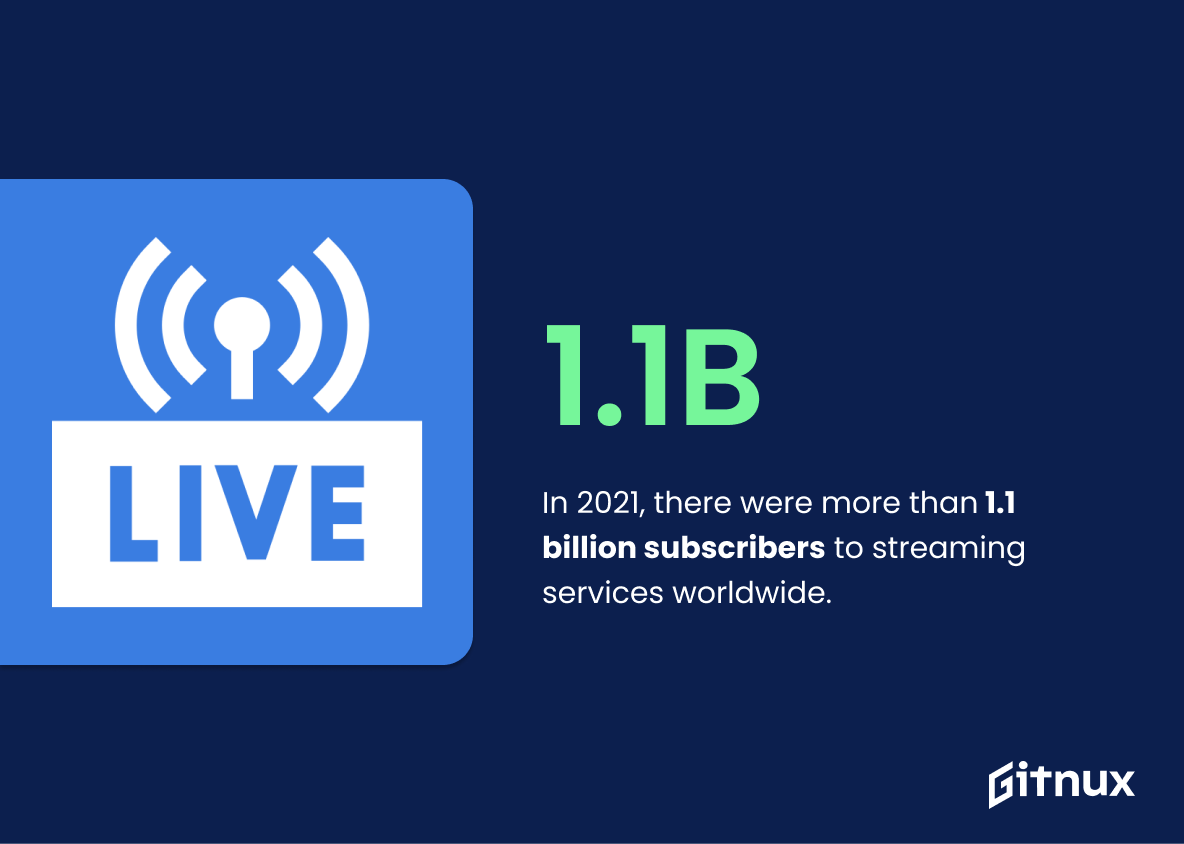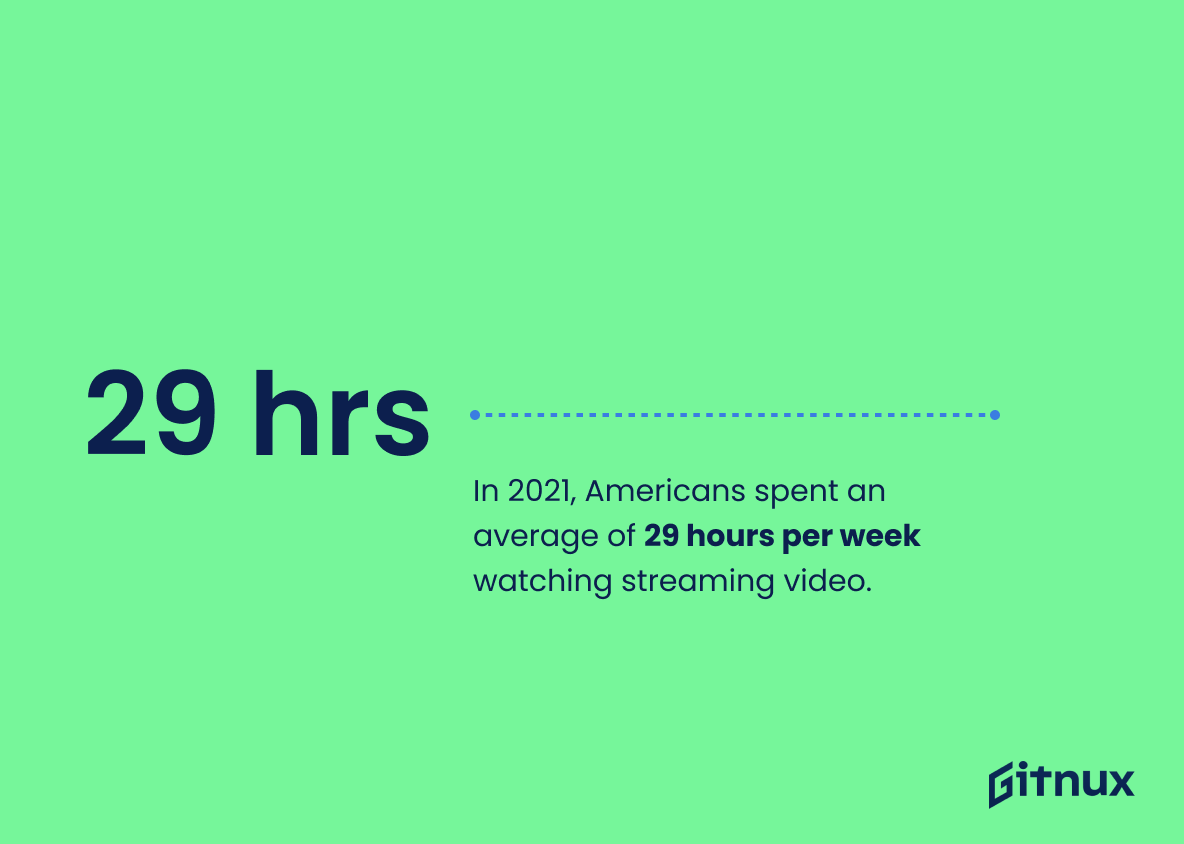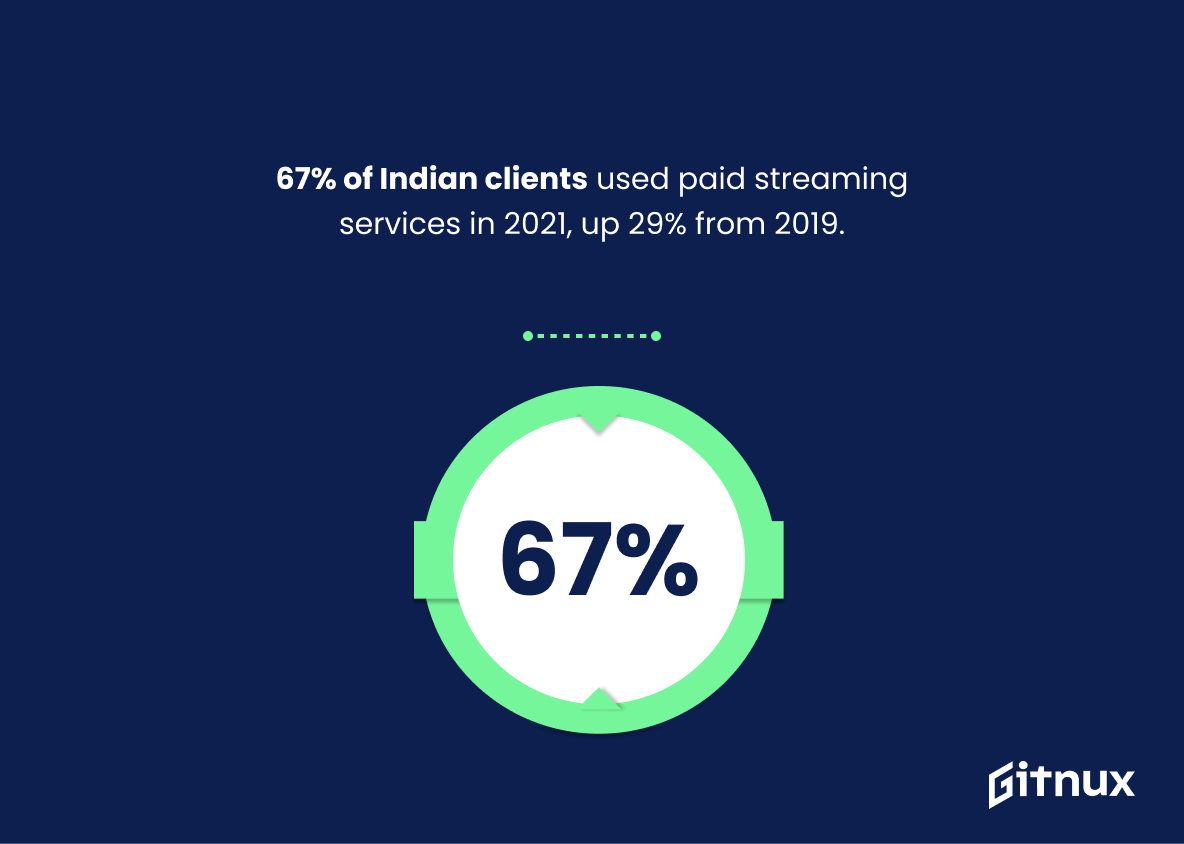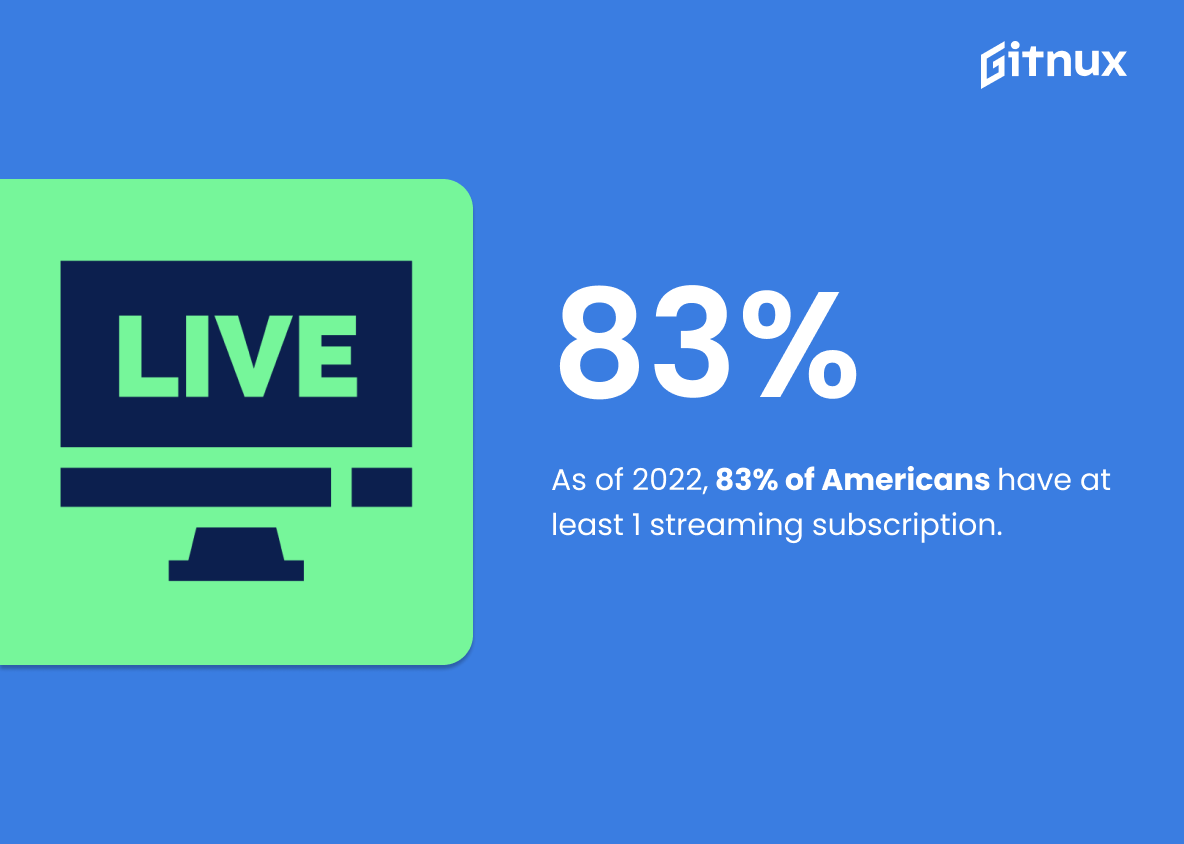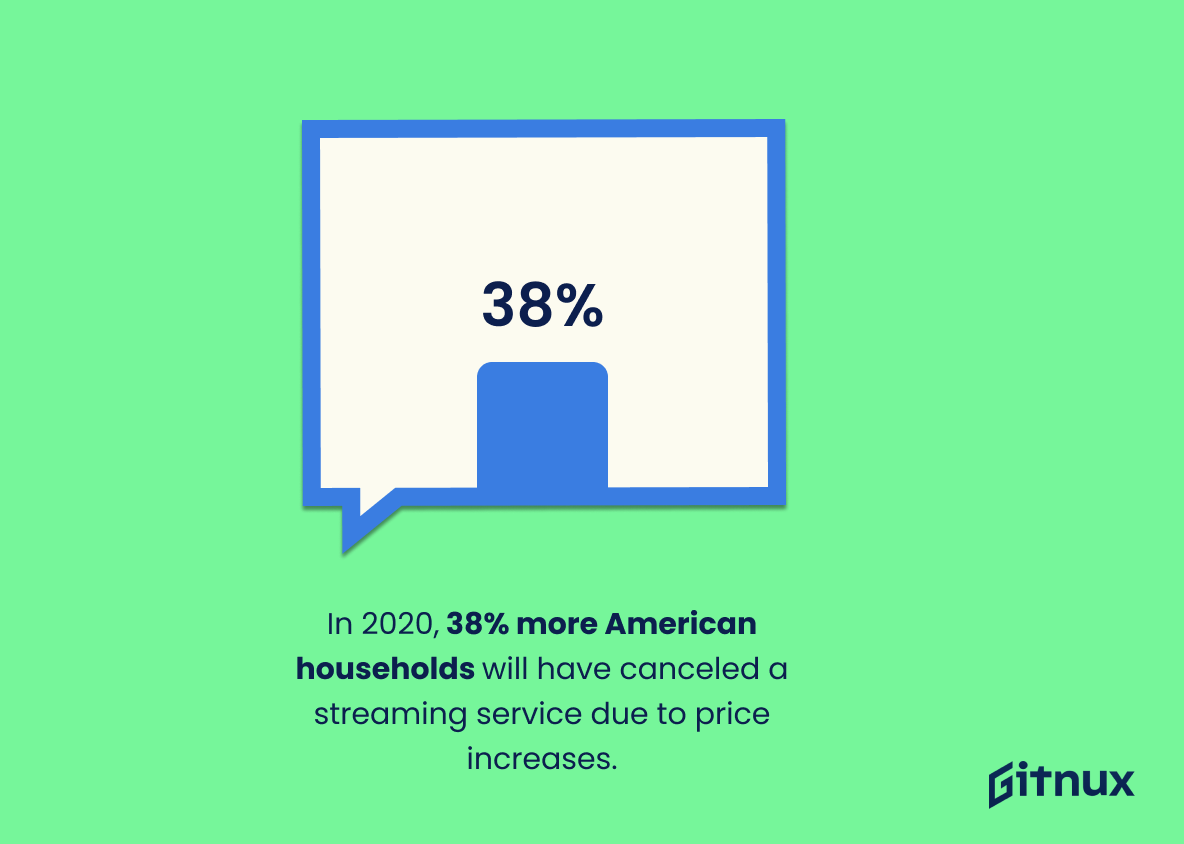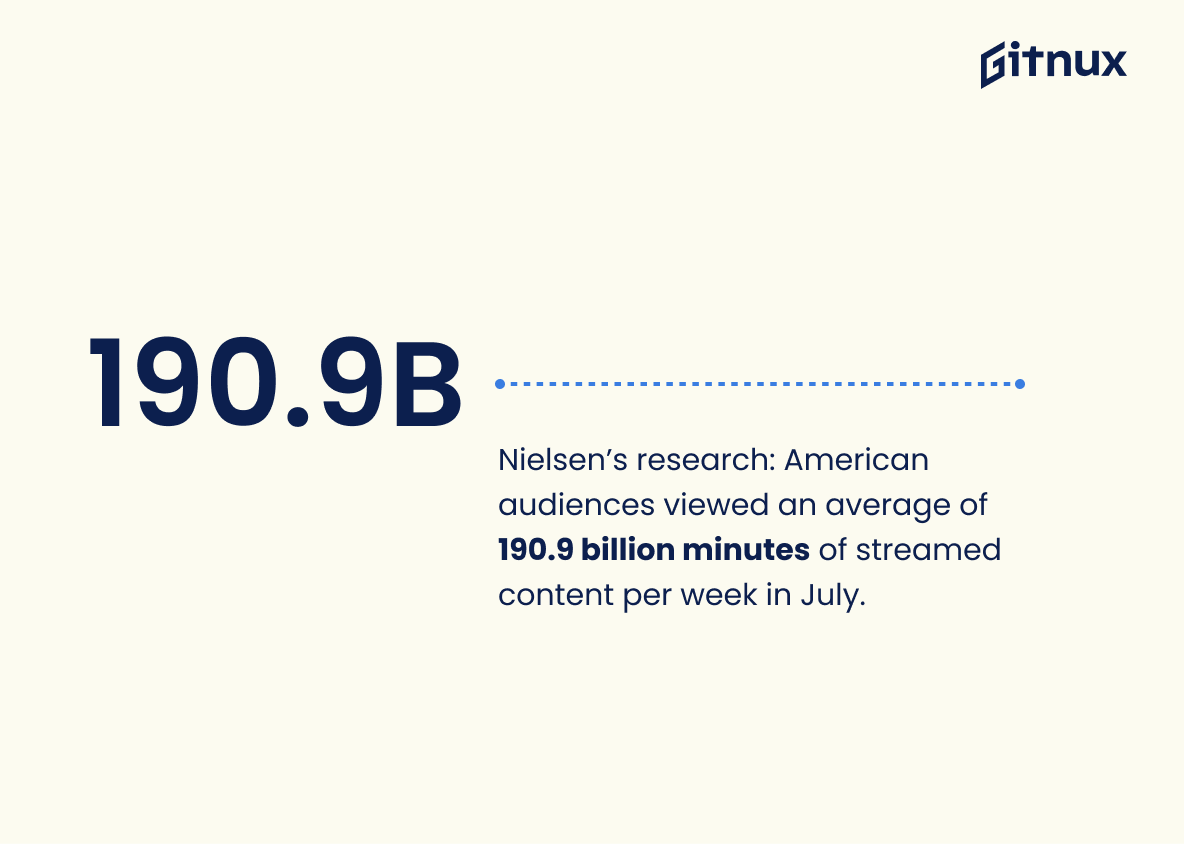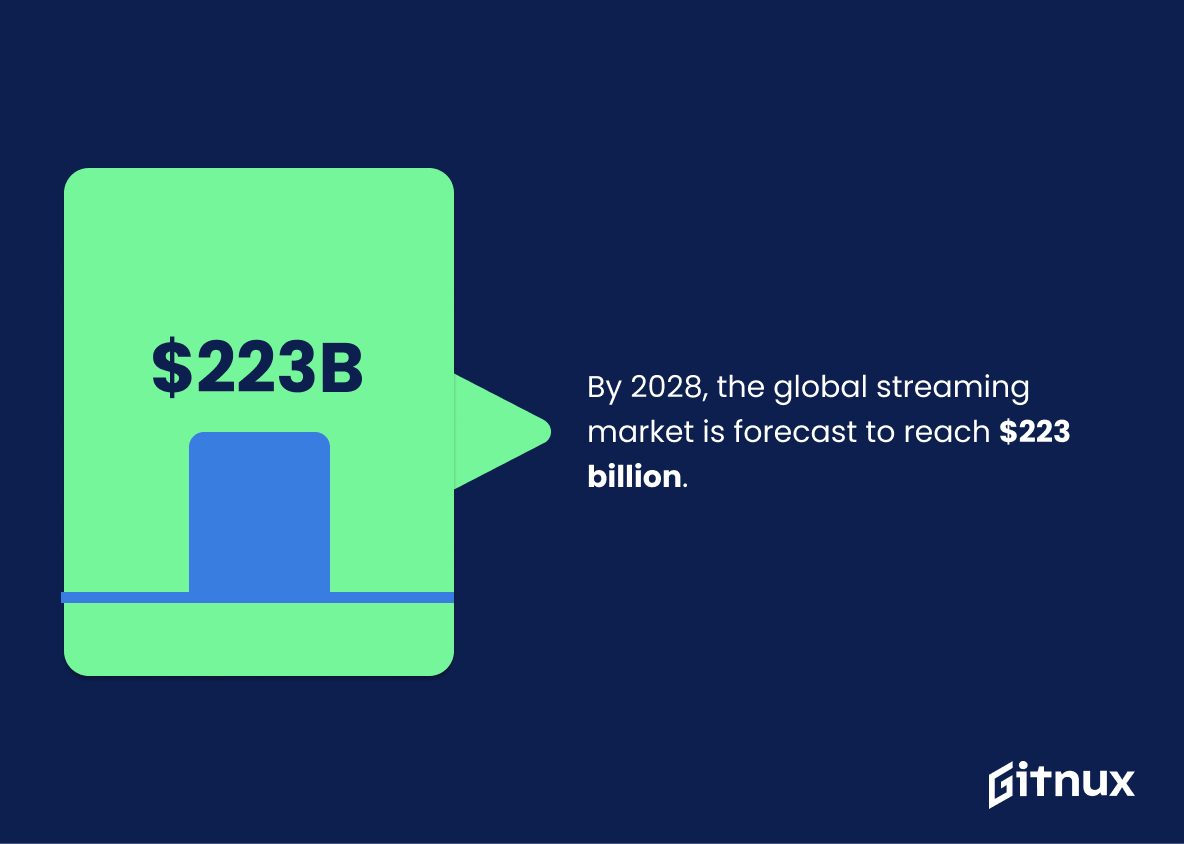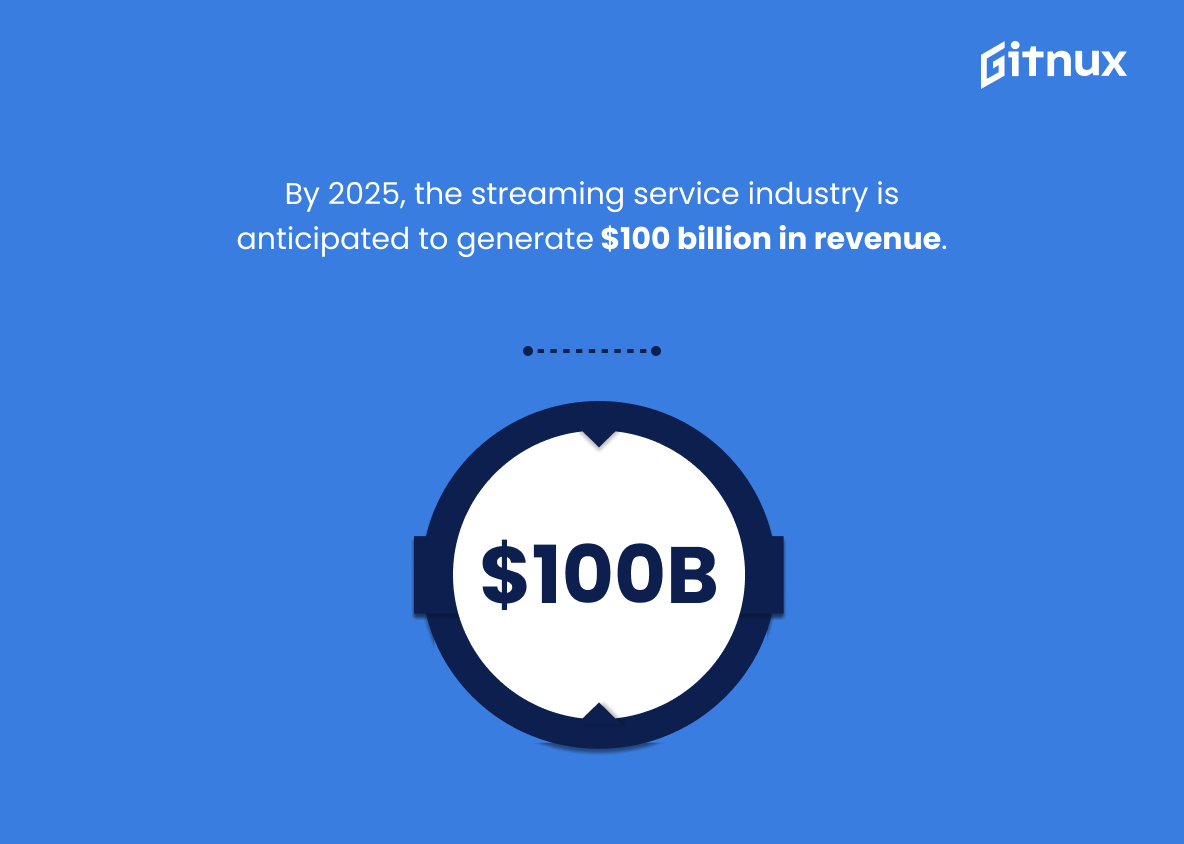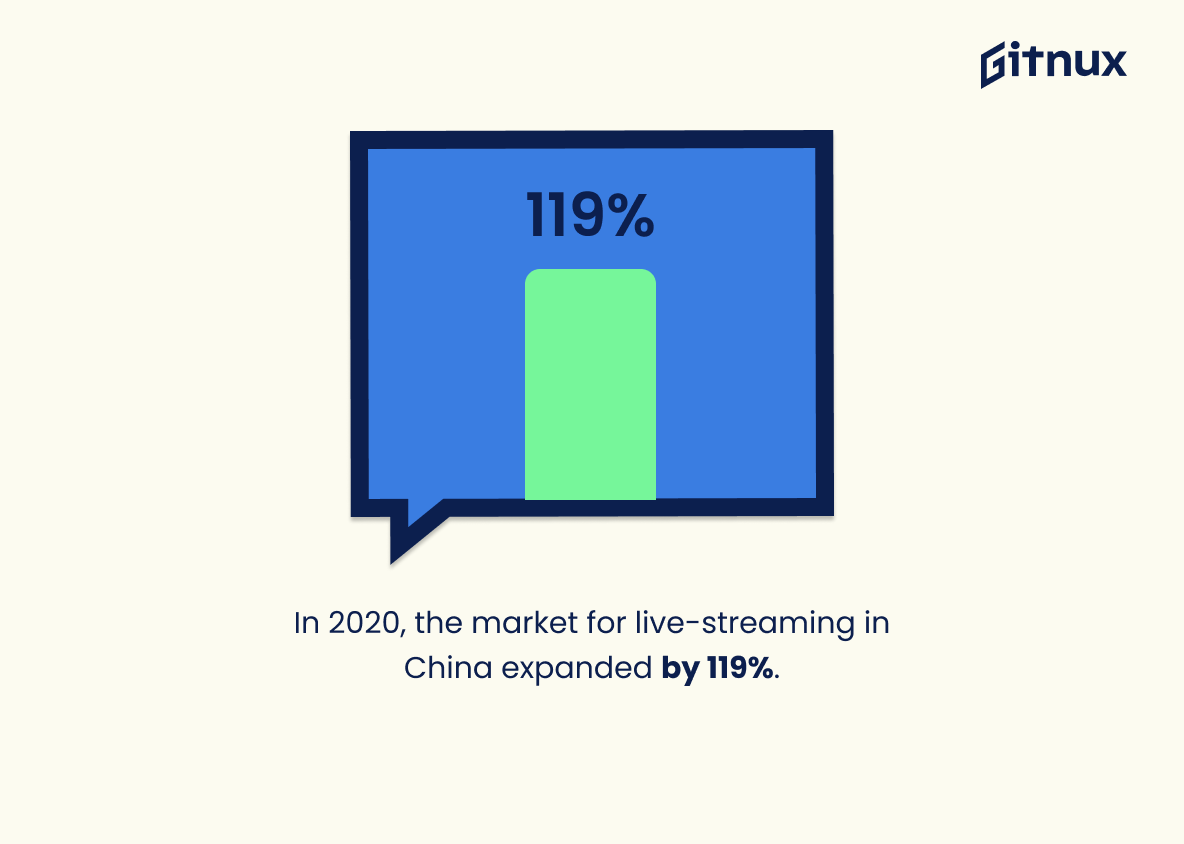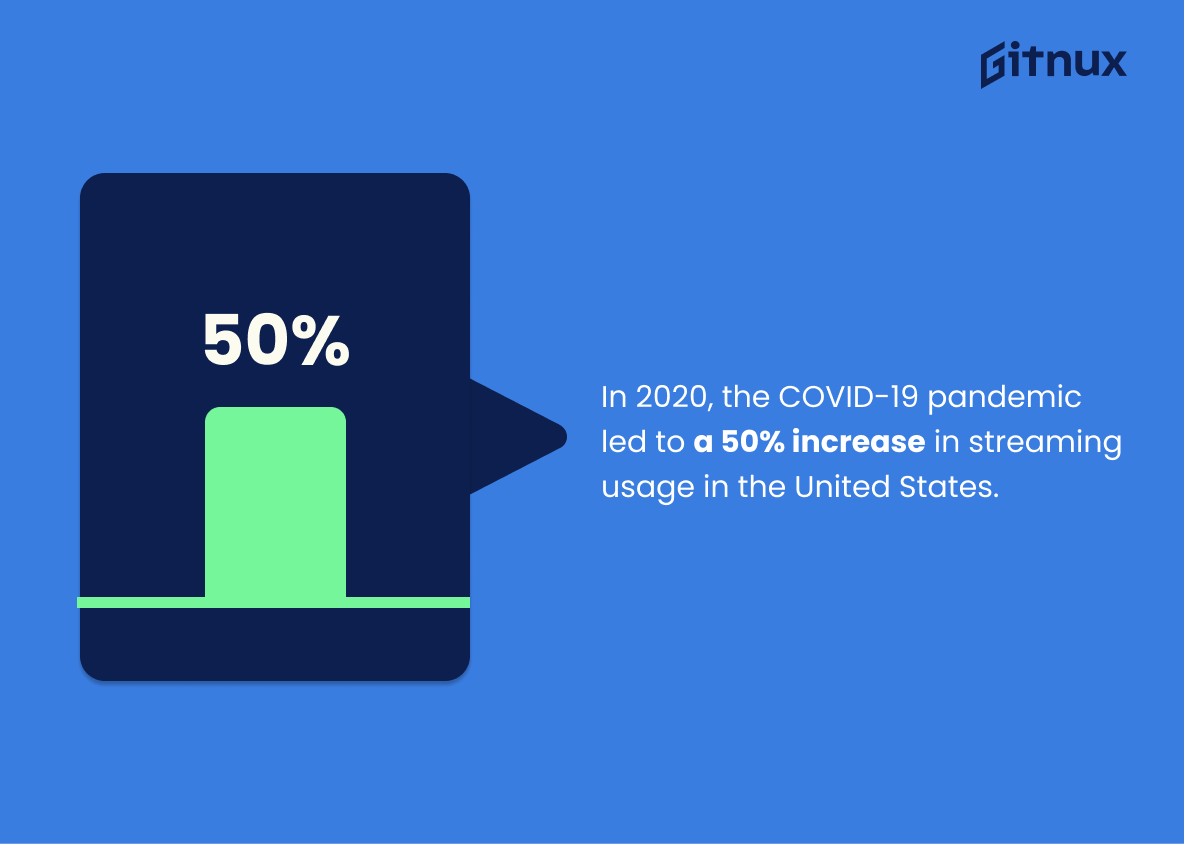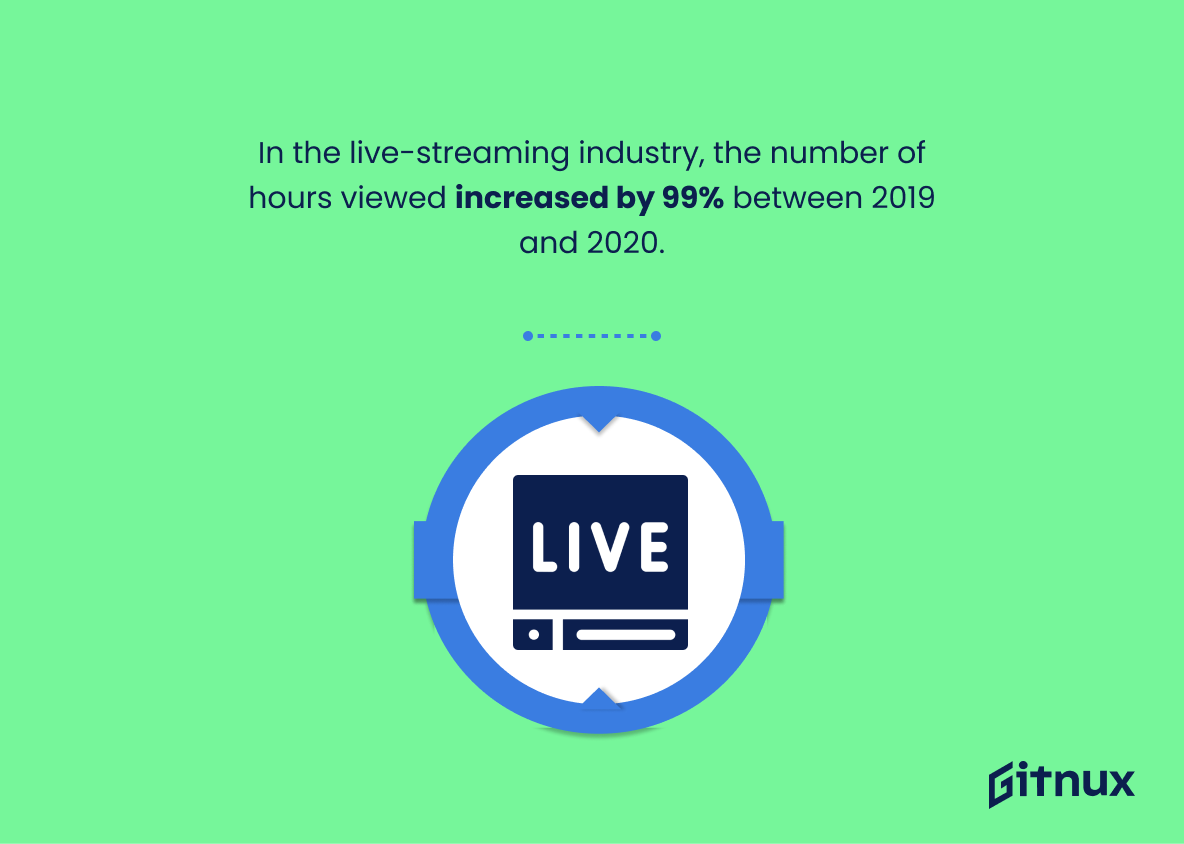The streaming industry has seen a dramatic surge in popularity in recent years, with more and more people turning to streaming services for their entertainment needs. With this increase in usage, there has been an increased interest in understanding the statistics behind streaming services.
This article will explore the various streaming services, their usage statistics, and the impact they have had on the entertainment industry. We will look at the different types of streaming services, the most popular services, and the amount of time people spend on streaming services. Additionally, we will discuss the trends in upcoming years of streaming services.
Streaming Services: The Most Important Statistics
80% of subscribers value the ability to create personalized playlists and recommendations, indicating that personalization is a significant factor for streaming service users.
By 2025, the streaming service industry is anticipated to generate $100 billion in revenue.
General statistics on streaming services
In 2021, there were more than 1.1 billion subscribers to streaming services worldwide.
68% of American households have a streaming service subscription.
With 67% of users, Mexico is ranked first among the top 5 nations for the amount of time spent listening to music via paid subscription. Sweden and Brazil came next, with 62% and 57%, respectively.
In 2021, 31% of Russian customers used paid streaming services, an increase of 5% from 2019.
In 2021, Americans spent an average of 29 hours per week watching streaming video.
61% of Chinese clients used paid streaming services in 2021, a 36% increase from 2019.
In 2021, in China, 97% of the population accessed music through licensed streaming services (paid and free). Meanwhile, India’s percentage was 94% and Russia’s was 82%.
Younger demographics were the most likely to use subscription audio streaming. 60% of consumers aged 16 to 24 who utilize audio streaming pay for a subscription. Next, 25-34-year-olds followed with 61%.
67% of Indian clients used paid streaming services in 2021, up 29% from 2019.
Online streaming accounted for over 80% of the music consumption in the UK in 2020.
As of 2022, 83% of Americans have at least 1 streaming subscription.
About 61% of young Americans primarily watch television through streaming services.
In 2020, 38% more American households will have canceled a streaming service due to price increases.
85% of American households have at least 1 paid video streaming subscription, and 60% have at least 1 paid music streaming subscription.
Nielsen’s research revealed that American audiences viewed an average of 190.9 billion minutes of streamed content per week in July, surpassing the average of 169.9 billion minutes viewed during the early pandemic lockdown period in April 2020.
Streaming industry statistics
By 2030, the market for video streaming is anticipated to reach $330.51 billion.
By 2028, the global streaming market is forecast to reach $223 billion.
In the US, spending on audio streaming products including music, podcasts, and audiobooks is expected to climb by 18.2% from $11 billion to $13 billion in 2022 in the US.
By 2025, the streaming service industry is anticipated to generate $100 billion in revenue.
In 2020, video streaming apps in the United States generated $24.1 billion in revenue.
The value of the market for video streaming reached 59.14 billion in 2021.
The video streaming industry reached $72,2 billion in 2021, with the United States accounting for the majority of revenue. By 2026, it is expected to reach $115 billion.
In 2020, the market for live-streaming in China expanded by 119%.
Streaming usage statistics
Subscription audio streaming usage of music increased by 51%.
Streaming services account for over 25% of all U.S. television viewing.
In 2021, 78% of American adults utilized a streaming service, up from 67% in 2018.
In 2020, the COVID-19 pandemic led to a 50% increase in streaming usage in the United States.
From 2021 to 2022, video streaming in the US increased by $3 billion, from $44 billion to $47 billion.
In the live-streaming industry, the number of hours viewed increased by 99% between 2019 and 2020.
See the best Live Streaming Software
During the lockdown in 2020, video streaming services experienced a 10% increase in viewership.
Streaming received 34.8% of consumer attention in July 2022, compared to cable’s 34.4%. Hence, streaming is currently the most popular method of TV viewing.
Streaming services statistics
Twitch is the leading platform for gaming content, with far more concurrent viewers than YouTube Gaming and Facebook Gaming.
Netflix continues to lead in streaming app market share in the United States with 21% of the market, but since Q1 2021, it has lost market share every quarter. In addition, the launch of Paramount, Apple TV+, and Peacock has diluted the market.
Tencent Video is the most popular video streaming platform in China, with 900 million users.
YouTube is the most popular free app for streaming videos with over 2.6 billion active users, while Netflix is the most popular paid app with 209 million subscribers worldwide.
In 2021, 32% of all music streamers had a subscription to Spotify.
Streaming subscribers statistics
80% of subscribers value the ability to create personalized playlists and recommendations, indicating that personalization is a significant factor for streaming service users.
70% of streaming service users access their services via a mobile device, while 68% use a laptop and 60% use a smart TV.
With 47% of users sharing their passwords, subscription sharing is also a common practice among users of streaming services.
More than 78% of consumers claimed to use licensed music streaming services to listen to music (subscription and ad-supported).
62% of American adults use a streaming service to watch television shows.
35% of those who didn’t pay for a streaming service claimed they didn’t because they could access whatever music they wanted to listen to for free on video streaming websites.
As the main reasons for subscription cancellation, 49% of respondents cited a price increase as the most probable reason, while 31% cited the removal of specific content.
The average U.S. subscriber has access to 4 paid streaming services.
Streaming services trends in 2023
The rise of ad-supported streaming services: despite the continued dominance of subscription-based models, ad-supported streaming services have gained traction in recent years. More than 80% of U.S. consumers are willing to watch advertisements in exchange for free or discounted streaming services, according to a report by Deloitte. It is anticipated that this trend will continue in the coming years.
Streaming services on smart TVs are increasingly utilized: 60% of U.S. broadband households own at least one smart TV, and more than half of these households access streaming video services through their smart TVs.
The growth of streaming services drives the demand for high-quality content: streaming services invest heavily in the production of original content to attract and retain subscribers. Netflix increased its investment in original content by 26% in 2020, while Amazon Prime Video increased its investment by 15%.
Supplementary Statistics
As of January 2021, there were over 391 million subscriptions to online video streaming services worldwide.
Streaming services have become an integral part of our lives, with millions of people around the world subscribing to them. This statistic is a clear indication of the impact streaming services have had on the entertainment industry and how they have changed the way we consume content.
The global streaming market will be worth approximately $72.8 billion by 2023.
Streaming services are becoming increasingly popular and lucrative, and that the industry is expected to continue to grow in the coming years. This is an important point to consider when discussing the current state of streaming services and their future prospects.
By 2025, the number of streaming service subscribers is expected to reach 1.3 billion.
Streaming services are becoming increasingly popular and are likely to become a major part of the entertainment industry. This statistic is important for anyone interested in streaming services, as it provides an indication of the potential size of the market and the potential opportunities for businesses in the streaming industry.
Streaming services account for 68% of TV viewing time in the US (2021).
Streaming services have become the go-to source for TV content, with a majority of viewers turning to them for their entertainment needs. This statistic is a testament to the success of streaming services and their ability to capture the attention of viewers.
In the US, 74% of households have a subscription to at least one streaming service (2020).
The majority of households have embraced streaming services, making them an integral part of the entertainment landscape. This statistic is especially relevant for a blog post about streaming services statistics, as it provides a snapshot of the current state of streaming services in the US.
In 2020, India had the highest Watch Time Per Visitor, averaging 13.96 hours per month on streaming services.
Indian viewers are highly engaged with streaming services, spending an average of 13.96 hours per month on them. This is a clear indication that streaming services are becoming increasingly popular in India, and that they are an important part of the entertainment landscape in the country.
In 2020, the streaming service Disney+ reached 73.7 million subscribers one year after its launch.
The service has been able to capture a large audience in a short amount of time, indicating that it is a viable option for those looking to access content from the Disney brand. This statistic is a powerful indicator of the potential of streaming services to reach a wide audience and become a major player in the entertainment industry.
Amazon Prime Video had over 150 million subscribers worldwide by the end of 2020.
The statistic that Amazon Prime Video had over 150 million subscribers worldwide by the end of 2020 is a testament to the streaming service’s immense popularity. Amazon Prime Video is one of the most successful streaming services in the world, and its success is reflected in the sheer number of subscribers it has. This statistic is an important one to consider when discussing streaming services statistics, as it shows the power and reach of Amazon Prime Video.
YouTube had approximately 2 billion monthly active users in 2020.
The sheer magnitude of YouTube’s monthly active users in 2020 is a testament to its immense popularity and influence in the streaming services industry. This statistic serves as a reminder of the platform’s immense reach and its ability to captivate audiences around the world.
In the US, viewers aged 18-34 spent an average of 3 hours and 42 minutes per day watching streaming services in 2020.
Streaming services have become an integral part of their daily lives, with a significant portion of their time devoted to consuming content from these platforms. This is an important statistic to consider when discussing the success of streaming services and their influence on the entertainment industry.
Hulu had over 39.4 million subscribers in the United States by the end of 2020.
The fact that Hulu had over 39.4 million subscribers in the United States by the end of 2020 is a testament to the streaming service’s success and popularity. This impressive number of subscribers is a clear indication that Hulu is a major player in the streaming industry and is here to stay.
In 2021, an estimated 35.4% of US households will have cut the cable cord in favor of streaming services.
This highlights the increasing popularity of streaming services and the potential for further growth in the future. It is an important statistic to consider when discussing the impact of streaming services on the media industry.
In 2020, the estimated global revenue from video streaming services was $70.05 billion.
Streaming services have become an integral part of our lives, and that they are here to stay. It also shows that streaming services are a lucrative business, and that they are likely to continue to grow in the future.
In 2021, online streaming accounts for 63.4% of all video consumption.
This demonstrates the sheer dominance of streaming services in the video consumption market, and the extent to which they have revolutionized the way we watch movies and TV shows. This statistic is essential for any blog post about streaming services statistics, as it provides a clear snapshot of the current state of the industry.
In 2021, 58% of US streaming service subscribers signed up for a free trial.
A majority of subscribers are willing to take the plunge and try out the services, even if it means signing up for a free trial. This speaks to the trust that consumers have in streaming services, and the potential for growth in the industry.
The average US household subscribes to 3.1 streaming services in 2021.
Streaming services have become an integral part of the average American household, with more and more people subscribing to multiple services. This statistic is a valuable insight into the growing popularity of streaming services and the impact they have had on the entertainment industry.
In 2020, 81% of broadband households with smart TVs also had a subscription to at least one streaming service.
The majority of households with smart TVs have embraced streaming services, suggesting that streaming services are becoming an increasingly popular way to access content. This statistic is an important piece of evidence for anyone looking to understand the current state of streaming services and their impact on the home entertainment landscape.
In 2021, North America is expected to make up 35% of global streaming revenue.
The region is a major player in the streaming industry, and that streaming services are likely to continue to be a lucrative business in the region. This is important information for anyone interested in the streaming industry, as it provides insight into the potential for growth and success in the region.
Conclusion
The streaming services industry is booming, with more and more people signing up for services every day. Statistics indicate that streaming services are growing in popularity, with more people using them to access their preferred content. Streaming services provide an inexpensive and convenient way to access content, so this trend is likely to persist. As more people adopt streaming services, it is evident that this industry will continue to expand over the next few years.
References
BlueWeave: “Video Streaming Market- Global Industry Size”, cited in February 2023 (Source)
BusinessofApps: “Video Streaming App Revenue and Usage Statistics (2023)”, cited in February 2023 (Source)
Cloudwards: “35 Streaming Services Statistics for 2023: Deep Dive Into Video & Music Streaming”, cited in February 2023 (Source)
comparitech: “30+ Video and music streaming statistics 2023 edition”, cited in February 2023 (Source)
Conviva: “Conviva’s State of Streaming”, cited in February 2023 (Source)
Deloitte: “2022 Digital media trends, 16th edition: Toward the metaverse”, cited in February 2023 (Source)
Grandviewresearch: “Music Streaming Market Size, Share & Trends Analysis Report By Service (On-demand Streaming, Live Streaming), By Platform (Apps, Browsers), By Content Type, By End-use, By Region, And Segment Forecasts, 2022 – 2030″, cited in February 2023 (Source)
Grandviewresearch: “Video Streaming Market Size Worth $330.51 Billion By 2030″, cited in February 2023 (Source)
ifpi: “Engaging with Music”, cited in February 2023 (Source)
Nielsen: “Streaming claims largest piece of TV viewing pie in July”, cited in February 2023 (Source)
Statista: “Consumer spending on video games, video and audio streaming in the United States in 2021 and 2022”, cited in February 2023 (Source)
Truelist: “Streaming Statistics – 2023”, cited in February 2023 (Source)
Zippia: “33 TRENDING STREAMING STATISTICS [2023]: VIDEO AND MUSIC STREAMING SERVICES TRENDS AND PROJECTIONS”, cited in February 2023 (Source)
ZipDo, cited June 2023: Streaming Services Statistics
